-
Compact, high-power terahertz source at room temperature developed
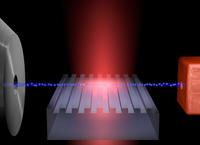
Terahertz (THz) radiation — radiation in the wavelength range of 30 to 300 microns — is gaining attention due to its applications in security screening, medical and industrial imaging, agricultural inspection, astronomical research, and other areas. Traditional methods of generating terahertz radiation usually involve large and expensive instruments, some of which also require cryogenic cooling. Researchers have developed a compact, room-temperature terahertz source with an output power of 215 microwatts.
-
-
Discovery points way to treatment of lethal toxin botulism

Botulinum neurotoxins are produced by Clostridium botulinum and cause the possibly fatal disease botulism, which impedes nerve cells’ ability to communicate with muscles and can lead to paralysis and respiratory failure. The botulinum toxin has also been identified as a potential biological weapon against a civilian population. Scientists have decoded a key molecular gateway for the toxin that causes botulism, pointing the way to treatments that can keep the food-borne poison out of the bloodstream.
-
-
Debate heats up over N.Y.’s Indian Point nuke license renewal
Indian Point nuclear power plant, located twenty-four miles north of New York City, provides 25 percent of the power used in New York City and Westchester County. The plant’s two reactors were built four decades ago, and the plant operator is seeking a 20-year license renewal for them, or they will have to be shut down. Opponents of the license renewal point to the risk inherent in operating aging reactors – and to a recently discovered risk: Indian Point is located near two active seismic areas — the Ramapo Fault Plain and the Peekskill-Stamford line.
-
-
Arktis closes $2 million financing round
Zürich, Switzerland-based Arktis Radiation Detectors Ltd., developer of a proprietary fast neutron detection technology which offers an innovative detection method for discovering well-shielded nuclear materials, successfully closed a round of financing worth $2 million.
-
-
Costly DOE uranium processing facility questioned
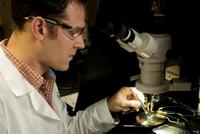
The cost of a proposed Department of Energy’s uranium processing facility for nuclear weapons at theY-12 National Security Complex in Oak Ridge, Tennessee has increase nineteen times – from the original estimate of $600 million to $11.6 billion. If these estimates are accurate, the processing facility would entail one the largest investments in the U.S. nuclear weapons infrastructure since the Manhattan Project.
-
-
$5 million NSF grant focuses on nuclear threat inspection
Penn State University has received a 5-year grant from the National Science Foundation (NSF) and DHS for nuclear threat inspection, as part of a team led by the Massachusetts Institute of Technology and including Georgia Tech. The grant will help develop new systems and sensors that will help detect nuclear weapons, special nuclear materials, radiation dispersal devices, and related threats.
-
-
Preventing nuclear terrorism
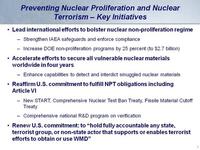
Nuclear terrorism remains a real and urgent threat. Despite an array of mechanisms established to combat this threat, several serious problems persist, requiring relentless attention and actions by the United States, Russia, and other responsible nations. These problems include continuing nuclear security vulnerabilities in a number of countries and the continued incidents of illicit trafficking in nuclear materials, radioactive sources, and the various components.
-
-
Reducing security threats from explosives
Researchers, as part of the Awareness and Localization of Explosives-Related Threats center (ALERT), a DHS Center of Excellence, are working on ways to detect explosives and neutralize their impact. The researchers are developing portable detectors as well as larger systems to scan for explosives. Some technologies will analyze the spectrum of light shining through vaporized samples; others will analyze solid residues.
-
-
Syria’s chemical weapons can be destroyed within nine months: experts
Weapons experts from the United States and Russia say most of Syria’s chemical weapons stockpile are kept as unweaponized liquid precursors, and thus could be neutralized in a short period of time without the risk that toxins could be stashed away by the regime for future use, or stolen by terrorists. A confidential assessment by the United States and Russia concludes that Syria’s entire arsenal could be destroyed in about nine months, assuming that Syrian officials fully cooperate with the weapons inspectors.
-
-
Robust fourth-generation nuclear fuel withstands high-temperature accident conditions
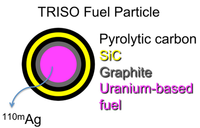
A safer and more efficient nuclear fuel is on the horizon. A team of researchers at the U.S. Department of Energy’s Idaho National Laboratory (INL) and Oak Ridge National Laboratory (ORNL) have reached a new milestone with tristructural-isotropic (TRISO) fuel, showing that this fourth-generation reactor fuel might be even more robust than previously thought.
-
-
Iran indicates willingness to rethink nuclear program in exchange for sanction relief
As part of a series of steps designed to present post-election Iran as more pragmatic, President Hassan Rouhani and his advisers indicated they would be willing to consider curbs on Iran’s nuclear program in exchange for relief from the crippling economic sanctions imposed on Iran. Some Western experts say that all these steps are more than mere cosmetic changes, while skeptics note that Obama has reached out to Iran before, with no results. Veterans of past nuclear negotiations with Iran also noted that it is likely that Rouhani’s team may not yet fully understand the kinds of concessions that the Islamic republic would be required to make to have the most painful economic sanctions lifted.
-
-
Improving nuclear waste repositories

How fast will iodine-129 released from spent nuclear fuel move through a deep, clay-based geological repository? Understanding this process is crucial. Countries worldwide consider underground clay formations for nuclear waste disposal because clay offers low permeability and high radionuclide retention. Even when a repository is not sited in clay, engineered barriers often include a compacted buffer of bentonite, a common type of clay, to improve waste isolation.
-
-
UN inspectors' repot on gas attack points to Assad’s elite military units
Russia may say publicly that it does not know who launched the deadly 21 August gas attack on two Damascus neighborhoods, but the Russians must have had an inkling: Russia’s UN ambassador agreed to have an international team of weapon inspectors sent to Syria to investigate the 21 August attack on one condition: the inspectors’ mandate was narrowed to verifying that chemical weapons were used, but specifically prohibited the inspectors from assigning responsibility to the attack. Russia’s effort to shield Assad has resulted in a report, submitted Monday to the UN Security Council, which does not explicitly name the Syrian regime as the party launching the attack, but details buried in the report point directly at elite military formations loyal to Assad.
-
-
The side of Homeland Security you won't see on TV
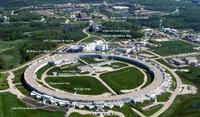
The way the Department of Homeland Security is often portrayed in popular culture — surveillance and secret agents — leaves out a crucial aspect of its role. It also works on technology to detect attacks as they are happening, and helps federal and local governments prepare for all kinds of disasters, from hurricanes to accidental chemical spills to anthrax attacks. Argonne Laboratory engineers contribute to this effort, helping local and state governments form emergency plans, run drills for a pandemic flu outbreak in the city of Chicago, and analyzed ways to enhance security at plants and factories across the country.
-
-
A new generation of odor-releasing materials for training dogs
Traditionally, the training of bomb-sniffing dogs has been a hazardous job, but newly developed odor-releasing materials could take the risk out of that work. Scientists are seeking to patent a novel system that can capture scents and release them over time.
-
More headlines
The long view
Keeping the Lights on with Nuclear Waste: Radiochemistry Transforms Nuclear Waste into Strategic Materials
By John Domol
How UNLV radiochemistry is pioneering the future of energy in the Southwest by salvaging strategic materials from nuclear dumps –and making it safe.
Model Predicts Long-Term Effects of Nuclear Waste on Underground Disposal Systems
By Zach Winn
The simulations matched results from an underground lab experiment in Switzerland, suggesting modeling could be used to validate the safety of nuclear disposal sites.
